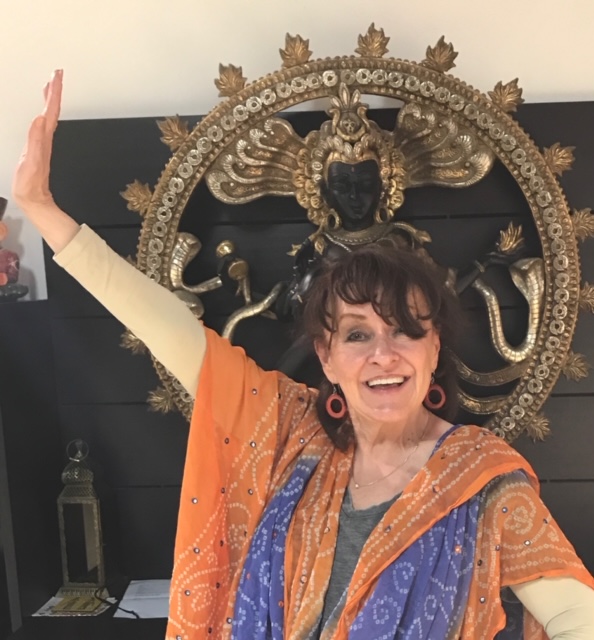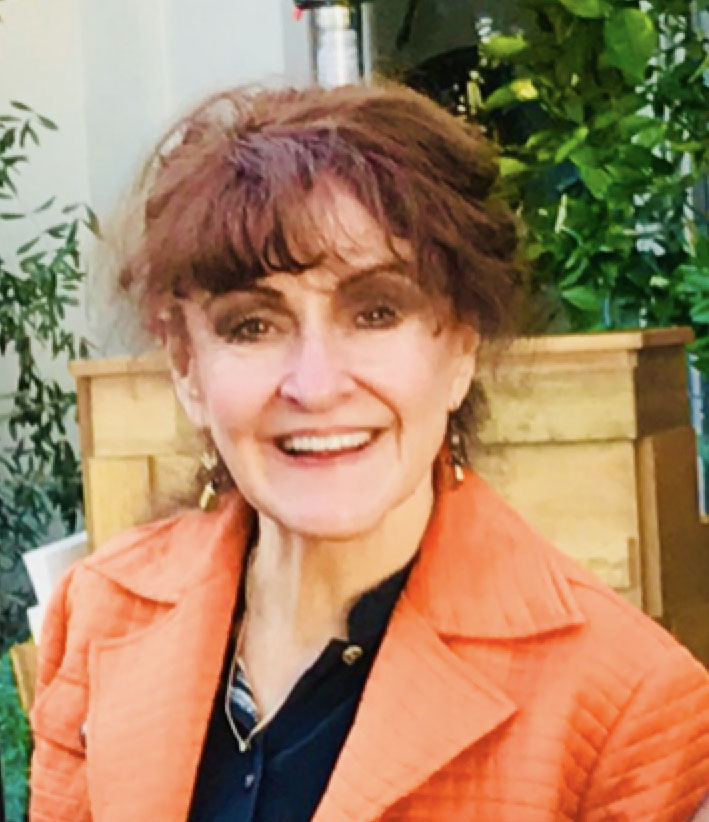 I have prided myself and promoted to anyone who would listen that I am YOLD (young/old). To celebrate my 70th birthday, I ran my first half marathon. At 71, I took Bollywood Dance classes. I have traveled the globe, and last year at the tender age of 72, while in Tibet, I hiked in the Himalayas. (Before you get too impressed, a van took us up to the hiking spot. “The hike” was more like an hour’s walk before reboarding the van. But it was the damn Himalayas, and people could barely breathe.)
I have prided myself and promoted to anyone who would listen that I am YOLD (young/old). To celebrate my 70th birthday, I ran my first half marathon. At 71, I took Bollywood Dance classes. I have traveled the globe, and last year at the tender age of 72, while in Tibet, I hiked in the Himalayas. (Before you get too impressed, a van took us up to the hiking spot. “The hike” was more like an hour’s walk before reboarding the van. But it was the damn Himalayas, and people could barely breathe.)
A few months later, as I was turning 73, without warning I noticed the first symptom of old person's disease had snuck up on me. I was in the act of standing up after having been seated for an hour, when I caught myself making that sound that the elderly make when standing or sitting down....Ahhhhh, like an exhale. Not the good Ahhhh as in AWESOME. This was the creepy ahhh of something taking too much effort.
I wasn't about to tell anyone, but I started to have dark thoughts....
Perhaps I was now “on the offramp” – that inevitable gradual decline into morbidity.
Then, WHAM! I received a sign when I stumbled across this quote:
"Old age is the only disease you can catch by imitating its symptoms."
– Mario E. Martinez, Psy. D.
The sun began to shine, birds sang, and my spirit soared. I put myself in reverse and backed right up that offramp. And I vowed to keep a keen and wary eye out for any sign that I might be falling prey to imitating any of the dreaded symptoms.
What I want to share with you is what I have learned in my brief journey in and out of the dreaded “old persons disease”. Not only have I identified the symptoms, but I have found a cure for each.
4 COMMON REVERSIBLE SYMPTOMS AND THEIR CURE
Symptom #1: Slowed walking and reduced gait.
This is an indicator that you fear you are becoming fragile, losing confidence, and concerned about your sense of balance.
Is it reversible? A study that was done with people from 60 to 90 years old to determine their “swing time”–the time the foot is off the ground when a person is walking. Swing time s realyed to balance and can indicate if someone is becoming frail. The participants were asked to walk so their swing time could be measured as a baseline. Then the subjects were divided into two groups and asked to play a simple computer game. Unknown to the participants, the game they were playing contained subliminal messages. The first group received positive messages, such as “wise," “astute," and “accomplished." And the second group received negative subliminal messages such as “senile," “dependent,” and “diseased." After playing the game, the participants were asked to walk again. The group that received negative messages lost swing time and started walking as if they were actually senile, dependent, and diseased. However, the group that received positive messages increased their swing time. This transformation seems to be solely due to their unconscious thoughts. For both groups, sense of self had an immediate impact on bodily function.
Cure #1: Strut your stuff and pick it up!
When walking down the street, the game I play is to spot someone much younger about 10 feet ahead of me, pick up my speed, and pass them. You will be surprised at how fast you can move when there is competition involved. When I pass them, I smile and say to myself, “Eat my dust!”
Symptom #2: Letting younger people help you when you can do it yourself.
I found myself saying “yes” to offers to take people’s seat or to carry something for me. Wasn’t it my time to cruise through life and let others take care of me?
Studies were done on the impact of personal responsibility on the health of residents in a nursing home. One group of residents was told that they could arrange the furniture in their rooms however they wanted, pick which nights to attend a movie, and select plants to keep and care for. A second group of residents, was told that the staff “want to do all we can to help you”. They had their furniture arranged for them, were told which nights to attend movies, and were given a house plant cared for by a nurse. After three weeks, almost all residents in the first group experienced significant improvement in physical and mental well-being; whereas, most participants in the second group declined or stayed the same.
Cure #2: Don’t let the sweat dry!
Keep active. Stagnation kills. Just say, “No, thank you.” If you can do it, do it. For bonus points go the extra step and help others. Open doors, give them your seat, and if you are feeling bold, carry their package.
Symptom #3: Not having a reason to jump out of bed each morning
The Japanese call this having an ikigai (pronounced ick-ee-guy): a direction or purpose in life that makes your life worthwhile and towards which you take actions that result in satisfaction and a sense of meaning. Science suggests that beyond just feeling useful, a key need for successful aging is to feel that you have played your part in leaving the world better than you found it.
Gerontologists report that many of the ills associated with aging have been worsened—or even created—by the lack of meaning and purpose in people’s lives. Many older people suffer from psychological pain, far deeper than the physical, as a result of not having a reason to get up in the morning
Cure #3: Get an Ikigai!
To discover your purpose, you must first find what you love, what the world needs, and what you are good at. Then, find the medium through which you can express that passion. You might want to make art, spend time with children, or volunteer in your community. (See Become a Volunteer by Ed Lopez.)
Symptom #4: “I am too old for that."
From your mouth to God's ears. You’re in real trouble when you (and God) start believing this.
A famous longitudinal study on aging and retirement found that people with a positive attitude toward aging live an average of 7.5 years longer than people who don’t. In fact, people’s perception of aging had a greater effect, positive or negative, on healthy longevity than did lowering cholesterol or blood pressure (which according to the study, increased longevity by 4 years). Perception even had more of an effect than non-smoking, which adds 3 years to your life.
Cure #4: STOP SAYING THAT!
Put some ridiculously youthful goals on your bucket list. And begin saying, thinking, and being that this leg of the journey is an opportunity for a fresh start to being the person you have always wanted to be.
I am confident you’ve got the point by now. However, I would like to leave you with this final thought: Playing the game of being forever young is a sucker’s game. You are not going to win. Playing the game of being YOLD (Young Old), vital, engaged, active, and having a great attitude toward aging is a game worth playing.
References:
Ohio Longitudinal Study on Aging and Retirement, 1975-1995
Nun Study - School Sisters of Notre Dame
Giving Seniors a Subconscious Boost
 Candace Shivers is a founder/principal of the Love of Aging movement, along with her good friends and colleagues, Maureen Charles and Liz Dietz.
Candace Shivers is a founder/principal of the Love of Aging movement, along with her good friends and colleagues, Maureen Charles and Liz Dietz.
At the age of 65, following the death of her husband, Candace reinvented herself, launching her current career in the field of aging. She is a champion for older adults living a healthy and vibrant lifestyle and a leader, educator, and expert on the impact of attitude on the quality of life for older adults. Candace currently serves as a Special Projects Manager for Wise & Healthy Aging non-profit providing innovative programming for older adults.
A renowned public speaker, she spent 36 years training people from around the globe in effective communication, leadership, and public speaking – talents she brings to the Love of Aging movement.
Candace is proud to be from Hope, Arkansas, Home of the World’s Largest Watermelon.
